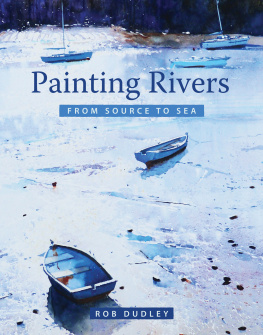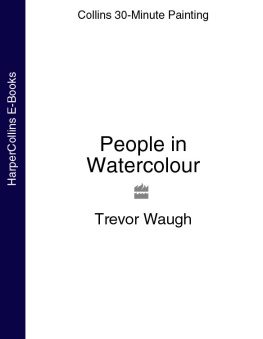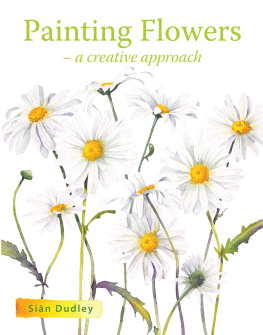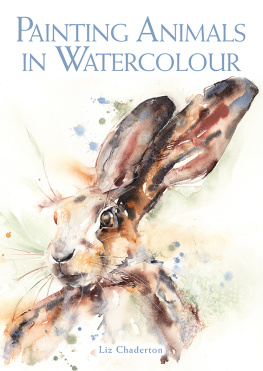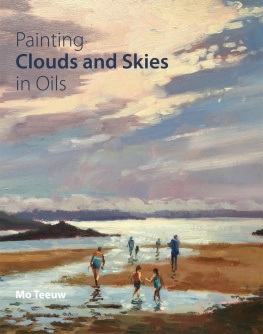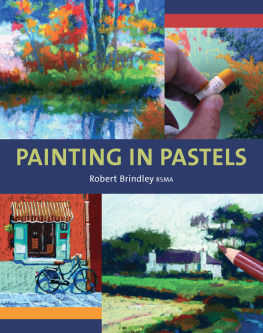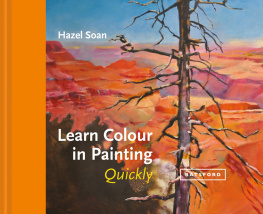Painting Rivers
FROM SOURCE TO SEA

Painting Rivers
FROM SOURCE TO SEA
ROB DUDLEY

THE CROWOOD PRESS
First published in 2018 by
The Crowood Press Ltd
Ramsbury, Marlborough
Wiltshire SN8 2HR
www.crowood.com
This e-book first published in 2018
Rob Dudley 2018
All rights reserved. This e-book is copyright material and must not be copied, reproduced, transferred, distributed, leased, licensed or publicly performed or used in any way except as specifically permitted in writing by the publishers, as allowed under the terms and conditions under which it was purchased or as strictly permitted by applicable copyright law. Any unauthorised distribution or use of thistext may be a direct infringement of the authors and publishers rights, and those responsible may be liable in law accordingly.
British Library Cataloguing-in-Publication Data
A catalogue record for this book is available from the British Library.
ISBN 978 1 78500 360 8
Dedication
For RS and JG to whom I shall always be grateful, but especially with love to Sin.
Contents

Introduction
I love painting. That might seem a rather bold statement, but I really do, I love it. A stretched sheet of watercolour paper sitting on an easel, with paints and brushes at the ready, thoroughly excites me and I cant wait to get painting. Some of my earliest memories are of the paintings that I produced as a small child. I can still remember drawing a face at my junior school with so much care and attention to detail that I sacrificed a break, or playtime as we used to call it, just so that I could finish blending a red and yellow crayon to create a flesh like colour. Both my parents must have been aware of how interested I was in art because soon after that, better-quality paper and pencils were made available at home, and it wasnt even my birthday or Christmas. I was hooked and have been ever since.

Learning how to paint requires persistence and endeavour; its not easy, it takes commitment and hard work. Like anything of worth, it requires effort. The nearest analogy that I can think of when it comes to learning how to paint is in learning how to drive a car. The first time sitting in the driving seat can make it all seem rather daunting: mirrors, manoeuvres, learning which pedal does what and when, lane positioning, signals, rules of the road, hill starts, requirements of the highway code and all this whilst the car is moving at speed! So much to learn, so much to take in, but slowly, with guidance and practice the biting point of the clutch becomes second nature, dropping down a gear when going up a hill is almost seamless, reversing into a parking bay no longer such a challenge, over time the learner becomes a driver. Its similar when learning to paint: it also can appear to be rather daunting at the start when staring at a blank sheet of paper, with a handful of brushes and brand new tubes of watercolour paints unwrapped for the first time; what to do next? But with practice and effort, what in the beginning might have appeared to be almost impossible becomes more achievable. Washes become controllable, compositions balanced and techniques mastered. I believe that with the right instruction everyone can paint, and I hope this book points you in the right direction.
Why paint rivers? From the trickle of a stream at its source, slowly meandering through rich green water meadows, to wide expansive estuaries and then to the sea, rivers have so much to offer the artist. They are full of life, light, movement, colour and interest. I have painted riverscapes for many years, and I never tire of them; they sustain me and I feel comfortable beside them. Every visit seems to present a different set of painterly possibilities. The Thames, Wye, Severn or Dee might be considered Landscapes with a capital L, attracting tourists from far and wide to visit and admire as I do. However, my interest also lies with the smaller, less well known, nameless rivers or streams, lower-case landscapes if you will. These are nonetheless beautiful and inspiring and although, one might think, not as awe-inspiring as their grander cousins, they should not be overlooked.
Within the pages of this book, through paintings, explanations and step-by-steps, I have tried to share with you my approach to the painting of rivers in watercolour. I dont pretend that I will have all the answers to all the questions when it comes to watercolour, but I hope that by describing my methods, techniques and ideas you will be encouraged to pick up your brushes and have a go.
Chapter 1
Getting Started
W atercolour is one of the simplest of media an artist can choose: it doesnt require the strong-smelling solvents common to oil painting; it is more stable when dry than a pastel painting; it is immediate, fluid and fun. With just a few tubes of colour, brushes, palette, paper and water you are ready to paint.

But where to start? Its no wonder that when confronted with racks of papers, dozens of colours and scores of brushes in various shapes and sizes, that many would be painters feel bewildered by the options available. So lets take a look at the essential requirements for the watercolour painter: namely paper, paint and brushes.

The Stream near Modbury. Size: 42 25 cm (16 10 inches).
PAPER
The choice of paper is often overlooked by those new to watercolour painting. How often have I heard from students when asked what paper are they using, I dont know; its just paper? To the watercolour painter there is no such thing as just paper, its choice is crucial to the overall success or otherwise of a watercolour painting. Choose the right paper and certain effects are possible to achieve; choose the wrong paper and those desired effects might prove disappointing or even impossible. For instance, a paper with a smoother surface will tend to lend itself to a finer, more precise type of painting, whereas a rougher paper is often better suited to a looser style of watercolour.
The four qualities that artists consider when making their choice of paper on which to paint are: texture, weight, hardness, and whiteness or colour.
Texture

From left to right: Hot pressed, NOT and Rough papers. Note how the texture of the paper has a direct influence on the mark created.
Watercolour paper is manufactured in three different types of surface texture. The types are known as Hot Pressed (HP), Cold Pressed (NOT) and Rough, the classification decided upon by the surface texture, the tooth as it is sometimes called. You might like to think of them simply as smooth, medium and rough. A smoother paper will prove easier to work on when producing a tighter, more detailed painting, whereas a rougher surface allows for a looser, more expressive style of brush stroke.
Next page
